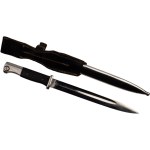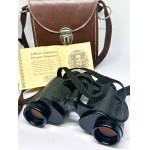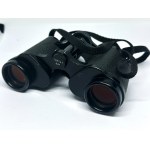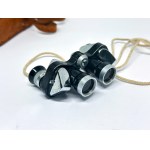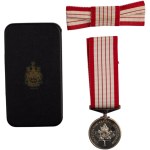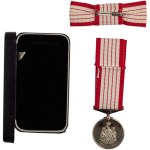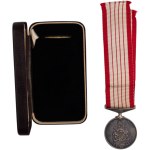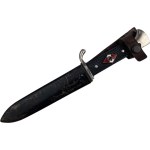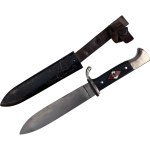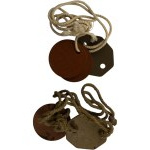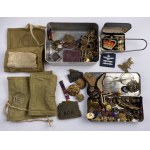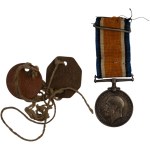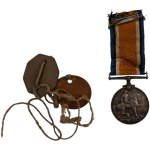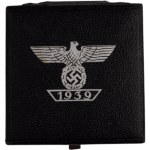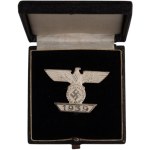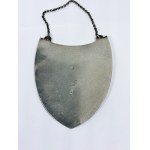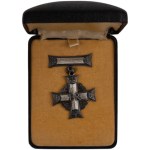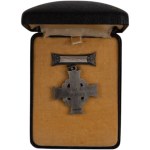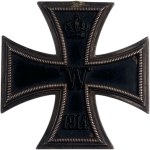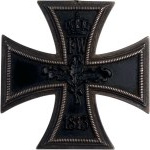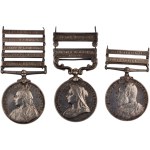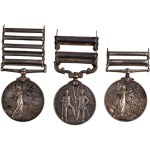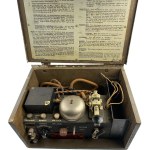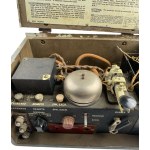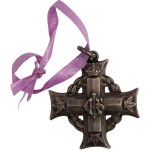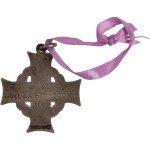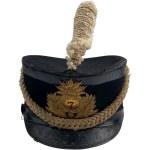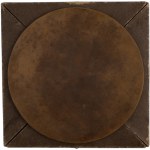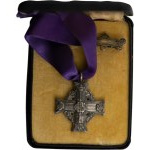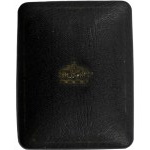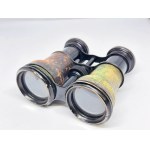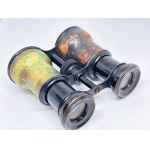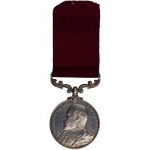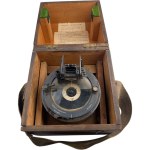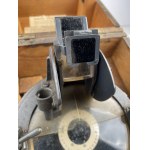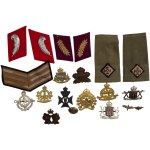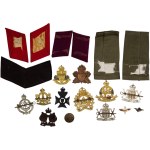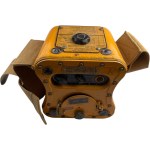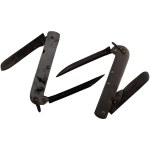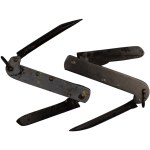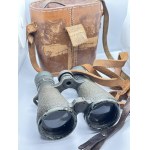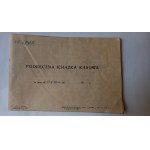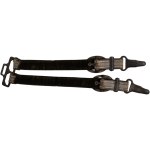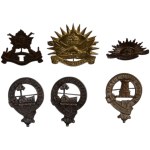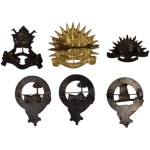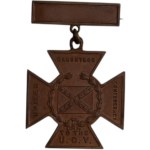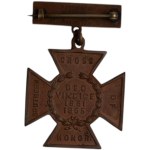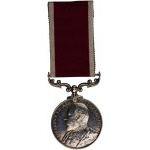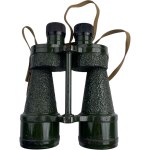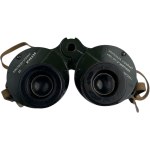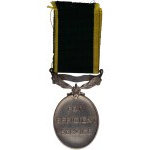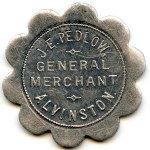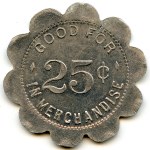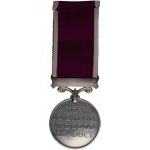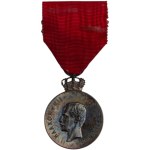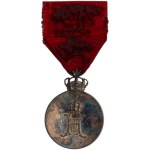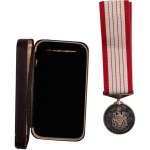Militaria auctions
Numbers on binoculars 148747. visual condition very good, binoculars practically not used, visible in photos
Visual condition good, visible in photos
In original case, with lady's bow riband. Unnamed as issued. 36.5mm. 36g of .925 silver.
In original case, unnamed as issued. 36.5mm. 36g of .925 silver.
Maker marked RZM M7/39 and dated 1939. HJ diamond has minor enamel chipping. One rivet replaced between leather and scabbard.
Set of 2 WWI Canadian I.D. tags named to 186371 Pvt. P.H. Coupland, 107th Battalion, along with his three WW2 I.D. tags, named to Lt. Col. P.H. K. Coupland, R.E. both with original cords. Percy Henry K Coupland attested with 107th Battalion, Winnipeg, Manitoba. Later he transferred to 90th Battalion Winnipeg Rifles and was later discharged. He stayed with the army as a career, and was promoted...
Marcel Champagne, served as a ambulance and supply truck driver for 4 years. Marcel was awarded silver war medal, silver defence medal, silver CVSM with bar, 1939-1945 star, France Germany star. Includes a blue legion hat, patches, pins, and ephemera.
Mostly Canadian. Includes sewing kits, tin for goggles, buttons, pins, and badges as pictured.
Named: 190219 PTE. R.J. NEWTON 91-CAN-INF Robert Joyes Newton was born on 3rd December 1872 and attested for the 91st Battalion, Canadian Infantry on 5th April 1916.
Unmarked, made by B.H. Mayer. Clasp and case are both in mint condition.
Veritas Export Silver Rhinograph, Communist Poland. Rated Silver 2, V and Poland. Product weight: 41.8 grams. Dimensions: 9.7x8 cm Very good condition
Named: 1261979 GNR. R.A. RITCHIE C.G.A. Ronald Arthur Ritchie was born on 18th October 1896 and attested for the Canadian Garrison Artillery on 16th March 1916.
Queen’s and King’s South Africa Medal: 1899-1902: 2952 Pte. T. Perkins. Devon: Regt. India General Service Medal 1895: 2952 Pte. G. Perkins 1st Bn. Devon: Regt. Perkins is entitled to all clasps. He is listed on the India Medal General Service Medal roll as ‘2952 Pte. George Perkins’ but on the other rolls for South Africa as ‘2952 Private T. Perkins’.
**Shipping Canada Only** Produced by Sabre Industries. Not tested.
Named: 742320 A-Sgt. J. A. BIDDISOOM M. M. Joseph was awarded the Military Medal, please see attached photos. He was killed in action on June 23rd 1918, and is buried at Bellacourt Military Cemetery in France.
Named: GS-14383 PTE. W. GREEN. R. FUS. Named: 66809 PTE. F. W. A. APPLEBY. WORC. R.
Visual condition used, visible in the photos, scratches on the skle but the image is quite clean
Military Cross presented to Second Lieutenant G.W. Sutliff, Yorkshire Regiment. He is also entitled to the British War Medal, Victory Medal, and 1914-15 Star. Sold with certificate of award and copy of Army Orders issued by General Sir H.S. Rawnlinson.
No makers label visible. Most likely early 1900s.
Named: James Alexander McMillan James was killed in action on October 8th 1916, he is buried at Adanac Military Cemetery in France.
Named: 669583 Pte. L.B. BLACKFORD Marked: STERLING Leslie Borthwick Blackford of Toronto served with the 3rd Battalion, Canadian Infantry. He was killed on 6th November 1917 by an enemy shell during the attack on Passchendaele Ridge.
Visual condition used, visible in photos, one lining missing
Korea 1950-53 medal pair named: SC-30479 G.A. Lajeunesse, SD166205 J.G.R. Lajeunesse.Presumably a pair awarded to brothers.
Named: 22733 MEC.Q.M.SJT.H.T.RICHARDSON. R.E. Includes research paper. 925 Silver, 35.3 grams (without ribbon)
WWII Roycal Canadian Air Force RCAF, RAF Azimuth Circle no 4 Compass **Shipping Canada Only**
31 EUR
Shipping to Canada only on this lot. Not tested, in original case.
**Shipping in Canada only due to weight.** Produced by Bendix Aviation Limited. Not tested. The Gibson Girl radio’s power was generated by cranking a double-voltage hand generator, at 80 revolutions a minute, delivering 24 volts instead of using batteries. This meant that the radio could be stored for long periods without maintenance. The radio’s hourglass design was so that it could...
1965 20 Years of Victory in the Great Patriotic War, 1975 30 Years of Victory in the Great Patriotic War, 1985 40 Years of Victory in the Great Patriotic War, 1918-1988 70 Years of the Armed Forces of the USSR.
One marked: M.S. Ltd. XX Second marked: Case XX Metal Springs
Marked with number as pictured. No makers marks. Nice condition.
Serial number 25437, dated III 1917, letter K. Binoculars in working order, visually as in photos
A handy cash book for the time from 28.8.1939 to ...1st Division 3rd Heavy Artillery Regiment1939 Main Military Printing House. , softcover. , 110 pp. , ( first 7 filled in ) , format 15.5 X 20.5 cm. , condition db. - as in photo ( stains on back cover and last dozen pages ).
Lot includes clan crest badges and Canadian / Australian cap badges.
Presented by the United Daughters of the Confederacy for loyal service to the South. Established in 1899, only living Confederate veterans were eligible for the medal.
Total length of the saber - 83 cm. Head - 12 cm. Length of the scabbard - 75,5 cm. Length of the saber in the scabbard - 90 cm. Saber - steel , gilded bronze , leather. Scabbard - gilded bronze , leather. Perfect condition - see photo.
Named: 22577 SERGT: G. LUXTON. R.E. Includes research papers. .925 Silver
Includes crescent moon, "F", "5", "8" badges, photo of veteran, Scott Post 319 rushvill NY ribbon, and 1863-1893 Gettysburg medal.
Produced by Ross of London. Ross, supplied the British War Department during WWI and WWII. They are the most well known maker of the military binoculars. This model was used by the British Army and are classified as 7 x 50 Prismatic No5 MK 4. the design was derived from the Ross Stepnite, which was introduced in 1930. The military Mk IV version of 1944 could also be filled with dry air to stop...
Canvas shows wear. See photos.
Named: 2586216 CPL. L. BARRATT. R. SIGS. 32.5g of .925 silver.
25¢ In Merchandise. A-Sc10-32
Named: LIEUT. (Q.M) L.H.MUDD. R.E. Includes research papers.
Presented to members of the royal family and the Norwegian government. Missing ribbon bar.
Named: 898317 SJT. H. LAMBERT. R. SIGS. 32.5g of .925 silver.
In original case, unnamed as issued. 36.5mm. 36g of .925 silver.

